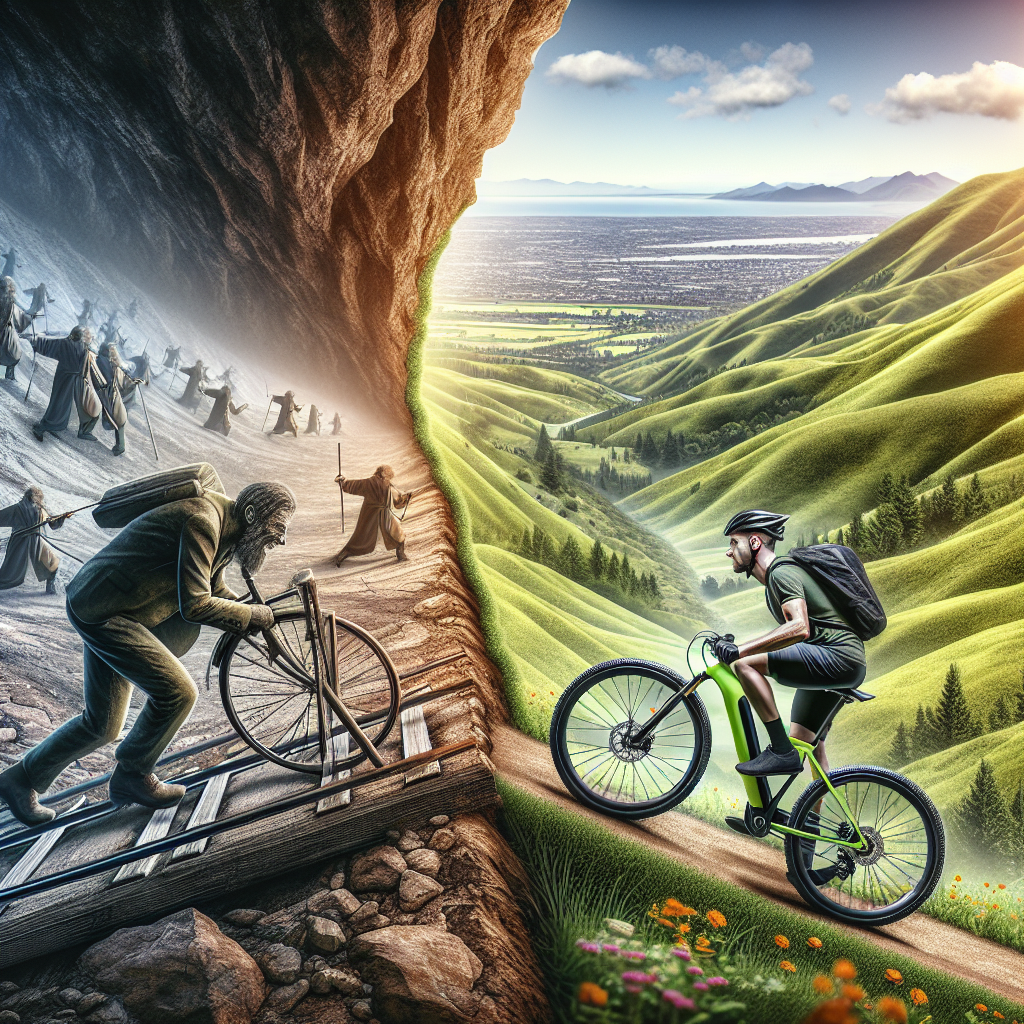If you’ve ever found yourself facing daunting hills on your cycling adventures, wondering if there’s an easier way to conquer them, then the answer might just be found in the world of e-bikes. Are e-bikes suitable for hilly terrain? Well, with their electric motor assist, these two-wheeled wonders are designed to provide an extra boost of power, making uphill rides more accessible and enjoyable. In this article, we’ll explore the benefits of e-bikes in navigating hilly landscapes, and why they might be the perfect solution for your next adventure.
Factors to Consider
When considering whether e-bikes are suitable for hilly terrain, there are several factors that you should take into account. These factors include motor power, battery capacity, bike weight, gear ratios, tire traction, suspension, real-world performance, rider fitness, and the terrain conditions.
Motor Power
The motor power of an e-bike is an essential factor to consider when tackling hilly terrain. There are two main types of motors commonly found in e-bikes: hub motors and mid-drive motors. Hub motors are located in the wheel hub, while mid-drive motors are positioned near the bottom bracket of the bike. Each type of motor has its advantages and disadvantages.
Hub motors are known for their simplicity and affordability. They are typically less powerful and provide assistive power to the rear wheel only. Mid-drive motors, on the other hand, deliver power directly to the drivetrain, allowing for a more efficient transfer of power. They are generally more expensive but offer better weight distribution and enhanced traction, making them more suitable for hilly terrain.
Another factor to consider is the power output of the motor. The higher the power output, the more assistance you’ll receive when climbing steep hills. Look for e-bikes with motors that have sufficient power to handle the inclines you’ll be encountering.

Battery Capacity
Battery capacity plays a significant role in the performance of an e-bike on hilly terrain. The range of an e-bike depends on the capacity of its battery. A higher capacity battery will allow you to cover longer distances without needing to recharge. When riding in hilly terrain, it’s essential to have a battery with sufficient capacity to ensure you won’t run out of power during your ride.
Consider the type of battery used in the e-bike as well. Lithium-ion batteries are the most common and offer a good balance between weight, capacity, and lifespan. They provide consistent power output and can handle the demands of climbing hills. Avoid e-bikes with outdated battery technologies, as they may not perform as well in challenging terrain.
Charging time can also be a consideration, especially if you plan to ride your e-bike frequently on hilly terrain. Look for e-bikes that offer quick charging times, allowing you to recharge your battery overnight or during breaks in your ride.
Bike Weight
The weight of the e-bike is another crucial factor when it comes to hilly terrain. A lighter bike will be easier to maneuver and will require less effort to climb hills. When considering the weight of an e-bike, it’s essential to look at both the frame material and any additional components.
Aluminum and carbon fiber frames are commonly used in e-bikes due to their lightweight properties. These materials offer a good balance between strength and weight, making them ideal for hilly terrain. Avoid e-bikes with heavy steel frames, as they can be cumbersome and negatively impact your ability to climb hills efficiently.
Additionally, consider any additional components on the e-bike that may contribute to its weight. Features such as racks, fenders, and suspension systems can add significant weight. Be mindful of these extras and choose an e-bike that strikes a balance between necessary components and weight.

Gear Ratios
The gear ratios of an e-bike play a crucial role in its performance on hilly terrain. The number of gears and the range they offer can greatly affect your ability to climb inclines smoothly. Having a wide range of gears allows you to find the optimal ratio for each hill you encounter.
Having a larger number of gears gives you more options to choose from, ensuring you can find the perfect gear for each hill you encounter. This flexibility helps you maintain an efficient pedaling cadence and prevents overly straining your legs. Look for e-bikes with a wide range of gears to ensure you’ll have enough options to tackle hilly terrain comfortably.
Tire Traction
Tire traction is vital when riding on hilly terrain, as it determines how well your bike can grip the road or trail surface. Two factors that affect tire traction are tire width and tread pattern.
Wider tires generally offer better traction, especially when riding on loose or gravelly surfaces. They have a larger contact patch with the ground, allowing for more grip and stability. Consider e-bikes with wider tires, especially if you’ll be riding on uneven or slippery terrain.
The tread pattern on the tires also plays a role in traction. Tires with aggressive tread patterns, featuring deep lugs and grooves, are ideal for off-road riding and provide excellent grip on loose surfaces. However, if you’ll be primarily riding on paved roads, a smoother tread pattern may be more suitable, as it reduces rolling resistance and improves efficiency.
Suspension
The suspension system of an e-bike helps absorb impacts and enhances rider comfort, especially when riding on hilly terrain. There are two main types of suspension systems to consider: front suspension and full suspension.
Front suspension, also known as a suspension fork, provides suspension only at the front wheel. It helps absorb impacts from uneven terrain, offering a smoother ride and better control. If you plan to ride primarily on gravel or dirt trails, an e-bike with front suspension can greatly enhance your experience.
Full suspension, as the name suggests, provides suspension at both the front and rear wheels. This offers even greater shock absorption and improved traction, making it ideal for tackling more challenging hilly terrain. However, full suspension e-bikes tend to be heavier and more expensive than their front suspension counterparts.
Consider the type of terrain you’ll be riding on and choose a bike with an appropriate suspension system to ensure a comfortable and controlled ride.
Real-world Performance
When it comes to riding e-bikes on hilly terrain, real-world performance is of utmost importance. Several factors contribute to the overall performance of an e-bike in hilly conditions, including climbing ability, handling on descents, and braking.
Climbing ability is a key consideration, as it determines how well the e-bike can handle steep inclines. Look for e-bikes with powerful motors and a wide range of gears to ensure you can conquer even the steepest hills with ease. Additionally, consider the battery capacity, as a larger capacity will provide more assistance when climbing.
Handling on descents is equally important, as it affects your confidence and safety when navigating downhill sections. Look for e-bikes with responsive brakes and good suspension systems to ensure you can control your speed and maneuverability on steep descents.
Braking is crucial for any type of riding, but it becomes even more important when tackling hilly terrains. Ensure that the e-bike you choose has reliable and responsive brakes, capable of bringing you to a quick and controlled stop, even on steep descents.
Rider Fitness
Your own physical fitness and ability to pedal assist play a significant role in how well you can handle hilly terrain with an e-bike. While e-bikes provide additional assistance, your own conditioning and pedal power still contribute to the overall performance.
Consider your own ability to maintain a consistent and efficient pedal stroke. While e-bikes provide assistive power, being able to contribute your own pedaling effort can greatly improve the overall performance on hilly terrain. Regular exercise and conditioning can help improve your cardiovascular fitness and leg strength, allowing you to make the most of your e-bike’s capabilities.
Terrain Conditions
The actual terrain conditions you’ll encounter on hilly terrain are essential to consider when evaluating the suitability of e-bikes. Factors such as the steepness of hills, road surface, and presence of obstacles can greatly impact your riding experience.
If you’ll be riding on steep hills, it’s crucial to choose an e-bike with sufficient motor power and low gearing. This combination will ensure you can maintain a reasonable pedaling cadence and conquer the inclines without excessive effort.
The road surface is another consideration. Smooth paved roads generally pose fewer challenges, while loose gravel or uneven trails require more traction and stability. Adjust your tire choice and tread pattern accordingly to ensure optimal grip and control.
Obstacles such as rocks, roots, or fallen branches can pose challenges when riding on hilly terrain. Look for e-bikes with good suspension systems and durable components to handle any obstacles you may encounter.
When considering whether e-bikes are suitable for hilly terrain, it’s essential to evaluate these factors comprehensively. By understanding and selecting e-bikes that excel in areas such as motor power, battery capacity, bike weight, gear ratios, tire traction, suspension, real-world performance, rider fitness, and considering the specific terrain conditions you’ll encounter, you can ensure a thrilling and enjoyable riding experience on hilly terrain.

